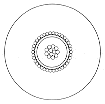@phusis Great discussion of speaker performance. My Legacy speakers marketing targeted very low bass distortion. Distortion numbers at frequency intervals at low and high SPL as well as bass=very indicative of a speaker's capability. Speakers which have less good (even defective) measurements can still work well under certain circumstances (room, matching system, types of music). I don't know their measurements but I find that I really enjoy listening to Maggies on voice and small combos but not for orchestral music, big band or heavy rock as a possible example (I've heard LRS to Tympanis to 20.1s over 35 years).
As to measurements and reviews, all I get for cable and tweaks are subjective reviews. Are there no good measurements/tests for them (I would suspect at least acoustic tests to view their effect on, frequency, dynamics, distortion and other acoustically testable phenomena)? .


